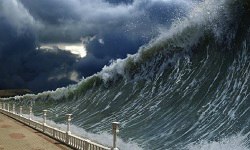Natural Hazards & Disaster Management
It deals with several features of the assessment of hazard and risk of land sliding. This article presents a summary review and a classification of the main approaches that have been developed world-wide. The first step is the part between qualitative and quantitative methods. The first group is mainly based on the site-specific experience of experts with the susceptibility hazard determined directly in the field or by combining different index maps. The approaches of the second group are formally more rigorous. It is possible to distinguish between statistical analyses (bivariate or multivariate) and deterministic methods that involve the analysis of specific sites or slopes based on geo-engineering models. Such analyses can be deterministic or probabilistic. Among the quantitative methods discussed is the Neural Networks approach which has only recently been applied to engineering geology problems. Finally several considerations concerning the concept of acceptable risk and risk management are presented. The seismic hazard is defines as the probabilistic measure of ground shaking associated to reappearance of earthquakes. Seismic hazard maps depicts the stages of chosen ground motions that likely will not, be exceeds in specified exposure times.
- Types of Natural Disaster
- Meteorological Hazards
- Alarming alerts and Early warning systems
- Disaster Risk Management
Related Conference of Natural Hazards & Disaster Management
Natural Hazards & Disaster Management Conference Speakers
Recommended Sessions
- Archaeology
- Ecology & Environmental Engineering
- Economic Geology & Geochemistry
- Environmental Geology
- Environmental Sustainability
- Geology and Geophysics
- Geology in Civil Engineering
- Global Warming & Climate Change
- Groundwater Foundation & Hydrology
- Marine Geology & Oceanography
- Mining and Soil Exploration
- Natural Hazards & Disaster Management
- Oil and Gas Reservoir
- Paleontology & Paleo-anthropology
- Petroleum Geology
- Remote Sensing & GIS of Environment
- Sedimentology Geology & Stratigraphy
- Soil and Rock Mechanics
- Structural Geology
- Volcanology & Plate tectonics

